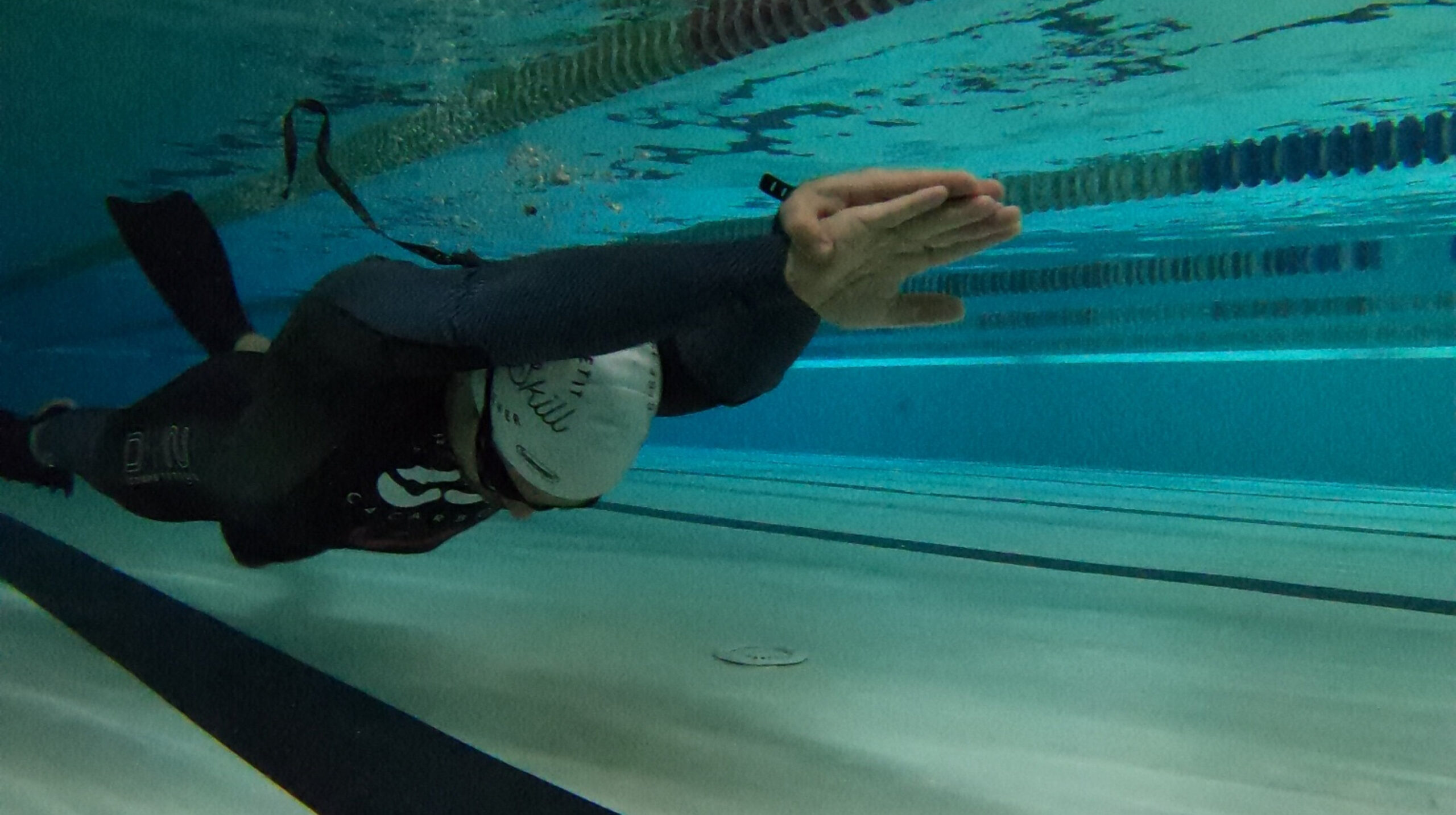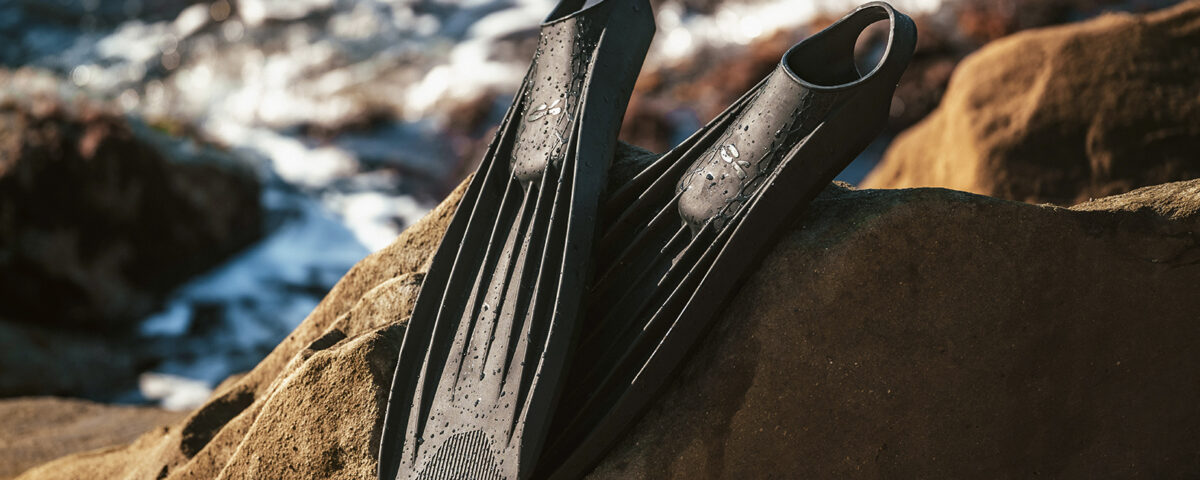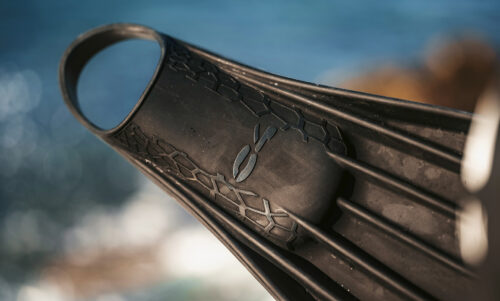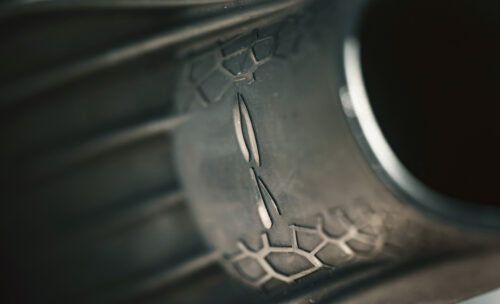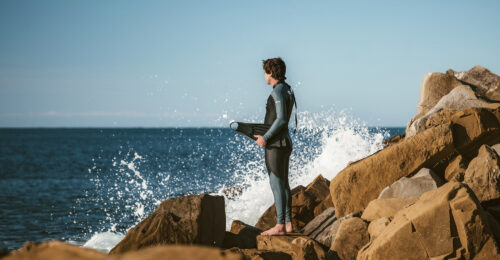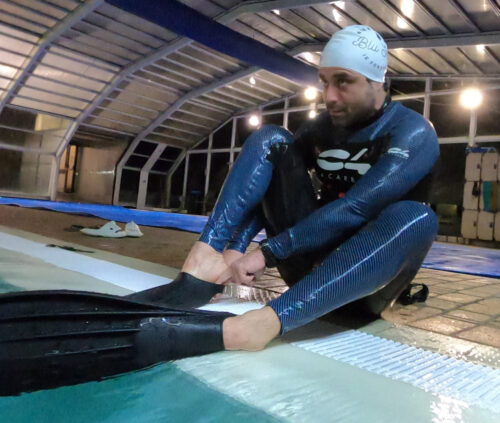C4: Wolverine, the training fin

The Atlantic Museum of Lanzarote
9 January 2025
C4 UP Ghost: The Camouflage You… Can’t See
6 February 2025There are many fins, actually very many. There are those in carbon that flex in resonance, those in light technopolymer that express the classic "c" propulsion, but those that were actually missing and that I had been looking for for some time were training fins that would help the freediver, muscularly and without compromising the technique, as happens with the short models typical of swimming. The Wolverines are exactly this.
Filippo Carletti
It is a very soft silicone model, extremely pleasing to the eye and comfortable, also thanks to the open shoe. This ensures that it does not rub over the heel but, instead, maintains a certain stability without tightening too much around the ankle.
The structure allows good control of the blade, which instead progressively gets lost in the longer fins and in fact, during the test, when kicked, the Wolverine does not drift, remaining straight along its axis.
They are not the classic short fins. They are of a medium - short length, rather heavy, which promise to maintain a decisive effort of the leg even in the moment of tiredness in which the action begins to lag.
Another detail we appreciate is the distinction between right and left fin. Finally!
Technique and operation
The sensation is that of having long fins on your feet. Definitely not short. In fact, during the stride the leg moves while maintaining a certain width, taking care of and exercising muscles that would otherwise not be involved with short models.
The significant element that is linked to the most modern swimming techniques is the use of the ankle, which becomes intuitive and natural. This allows you to train without losing the correct technique or getting used to a different movement.Another risk of training with fins is that of losing stride or frequency as tiredness begins to make itself felt. This, thanks to their heaviness and softness, does not happen. Indeed, the leg continues to seek the thrust of the shovel, which in fact can be felt very well even when burning or tiredness begins to appear.The structure of the Wolverine makes them stable and precise, guiding the movement without the risk of triggering disordered and uncoordinated movements.
The training
We tested them both with fin swimming exercises and on dynamics and depth. The good news for repetition lovers is certainly that they can become even more exhausting using this model. Certainly during swimming, resistance and strength resistance exercises will find a greater load, due to the weight, elasticity and surface of the fins.But for deep freediving this effort translates into an important ability to manage the various phases of the dive, learning the economy of the dive itself really well, given that the use of Wolverines will burden us with much greater consumption. Last but not least, the ascent kicking technique will be put to the test!However, if you are looking for speed and high intensity training, the fins will require a high frequency, with a narrow and composed stride. We will feel the leg muscles working along their entire length, even around the knee, with the effect of strengthening it!
In summary
I had not yet encountered training fins designed for freediving. The Wolverine by C4 represents just this. High rating, indeed, very high!We remain curious about the evolutions that this type of equipment will undergo in the coming years!
Credit: Eugenio Bucci
